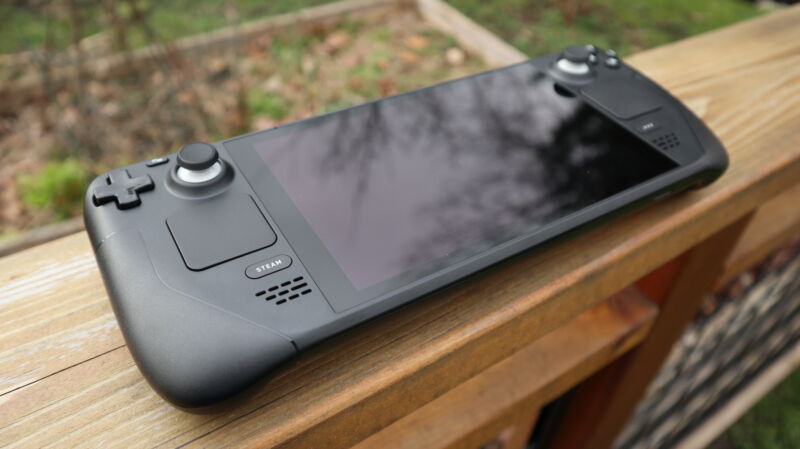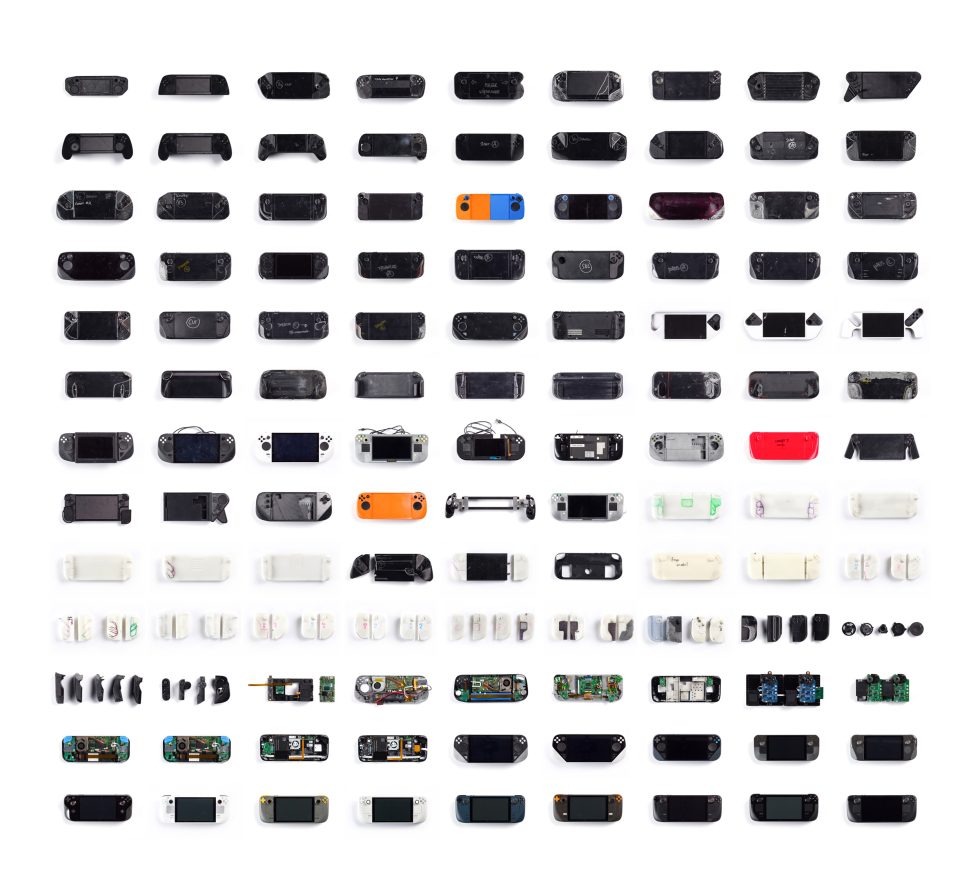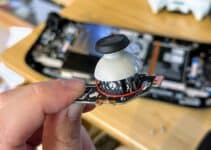
Enlarge / The Steam Deck has arrived.
Sam Machkovech
The Steam Deck, the new $399-and-up Switch-like PC made by Valve, sometimes feels like the most impressive portable gaming system ever made. But it’s also not finished.
Like other hot electronics in 2022, Valve’s first bespoke PC launch—which resembles a supersized Game Gear but is, at its heart, a Linux PC—is limited by a strained supply chain and an ongoing chip shortage. But if you’d like to feel better about missing the Deck’s first wave of preorders, or seeing a delayed shipping estimate of “Q2 2022” and beyond for new orders, this review is for you.
Produced by Sean Dacanay. Click here for transcript.
When the Steam Deck works as intended, it’s easily the best Nintendo Switch-like PC on the market. Its processing power, build quality, software flexibility, and Linux-to-Windows wizardry can breathe new life into (some of) your PC gaming back catalog. The Deck beats all other PC and Android options in this space. The right game, running at a smooth 30 fps with visual bells and whistles enabled (or 60 fps when possible), might even convince you to put your Switch into storage.
As a first-generation piece of hardware, the Steam Deck looks good, feels sturdy, and performs well (especially given its base price of $399). But the software side of the Deck is currently rough.
The Deck’s bugs, quirks, and outright failures stand in stark contrast to the Switch. In too many situations where the Nintendo Switch “just works,” you may find yourself saying to the Deck, “Just work, please!”
Windows and Linux support

Enlarge / A tighter zoom on the Steam Deck.
Sam Machkovech
One of the biggest caveats to this review is that the Deck currently lacks one potential selling point: compatibility with Windows 10. After providing Ars Technica with review hardware, Valve confirmed that certain Windows drivers for the Steam Deck were not ready. That remained the case as I wrapped up this review.
While I had the option to dual-boot Windows 10 and Linux during the review period, it didn’t feel fair to do so without full OS-level support for things like the CPU, the GPU, and audio playback. We’ll take a closer look at the Steam Deck’s Windows 10 experience once drivers are ready, but based on what I’ve found with the device’s built-in fork of Linux, I’m not confident that using Windows 10 will be a smooth experience.
Speaking of Linux, I’ve moved my testing of the Deck’s version of Arch Linux into a separate article. Can you go into the command line and install whatever you want? Can you bring Linux apps into SteamOS? Do you love Flatpak? Click here to dive into that stuff.
A history primer: Why the heck is Valve releasing a Linux PC?

Enlarge / Valve provided this image of various Steam Deck prototypes made over the years in its skunkworks labs.
Valve
The Steam Deck is Valve’s first stab at creating its own PC form factor. That separates the Deck from “Steam Machines,” i.e., desktop gaming PCs that Valve consulted on but didn’t produce. Both concepts arose from the same premise: make the massive ecosystem of Steam games work on non-Windows machines—and without requiring that Steam game devs patch or update their existing code.
In 2012, Valve co-founder Gabe Newell lambasted Microsoft’s increasingly draconian approach to software installation on Windows. At the time, Microsoft’s public statements and development efforts suggested that a “closed garden” might come to Windows—which, among other things, would threaten Valve’s ability to freely sell games on millions of PCs.
Fast-forward a full decade, and Valve has a much cozier relationship with Microsoft’s gaming division. (At press time, Microsoft has committed to Steam simul-launches for most of Microsoft’s major Xbox games. Last year, Valve even went to the trouble of sending Xbox head Phil Spencer his own prerelease Steam Deck.) Yet Valve still likes the idea of gaming PCs that can run games from its Steam storefront without needing Windows.
This probably boils down to money. Valve has already sunk years of work and tons of cash into its Steam Proton initiative, which combines a Wine compatibility layer and appropriate drivers to boot Windows games inside of Linux. If Valve can get most of Steam’s popular games running on the Deck without paying a per-device Windows license fee, the company could make out like a bandit—or, at the very least, keep the Deck’s launch prices down.
![IFYOO-V108-Red V-one Wired USB Gaming Controller Gamepad Joystick for PC (Windows XP/7/8/10) & Steam & Android & PS3 – [Red] IFYOO-V108-Red V-one Wired USB Gaming Controller Gamepad Joystick for PC (Windows XP/7/8/10) & Steam & Android & PS3 – [Red]](https://cheapestgadget.com/wp-content/uploads/2021/09/IFYOO-V108-Red-V-one-Wired-USB-Gaming-Controller-Gamepad-Joystick-for-PC.jpg)
